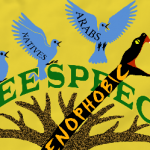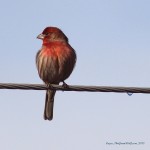Life is fascinating. It comes in all shapes, sizes and expression. Most of life on earth reproduces asexually – meaning that they copy themselves as clones. The majority of animals on earth reproduce sexually – as you may have guessed means that they combine genetic material from two different organisms creating new unique organisms. The form this usually takes is in sexual divergences wherein one provides sperm and the other provides the egg. The first animals to do this have completed this reproduction via external egg that becomes incubated and then hatches, typically done by the one that provided the egg, but not always. Mammals had developed a different approach by incubating that egg internally in one of the parents until it is birthed out of the parent, again most typically by the one providing the egg, but not always.



We’ve named those that provide the sperm male, and those that provide the egg female, having no other meaning biologically speaking. In most species of animal this sexual dimorphism is emphasized in secondary sex characteristics wherein the outer physical appearance differs between males and females, mostly becoming expressed at sexual maturity. This can appear as a difference in body size, physical strength and morphology, ornamentation, behaviour and other bodily traits.



The amount of difference of gender dimorphism between male and female humans is as much different as male and female wolves, chimpanzees, and lemurs. That being that the secondary traits are relatively minor. Otherwise the main differences remain as a reflection of individual personality.



In sexual reproduction there are entire species and some individuals in most other species that have both egg and sperm producing organs called hermaphrodites.

In species that are not entirely hermaphroditic usually one or both organs are inert, sometimes one reproductive organ being more visually apparent leaving the other going unnoticed until an autopsy is done. When sexual maturity is reached for these individuals one reproductive aspect usually develops in a more pronounced way than the other and can’t be reliably predicted which it would be when the time comes.

This is a lot more common than what most people often realize. In humans this is called intersex and is as common as redheads are in the global human population. Human cultures have denied the existence of intersex individuals to the point of mutilating infants that express intersex characteristics to the one that looks more prominent at birth in order to conform to societal expectations. These children are raised believing they are one gender and upon sexual maturity often find themselves in strange circumstances where they develop differently from their peers. Others, that don’t have any plain external physical sexually dimorphic characteristics, tend to find out when a medical issue arises and is found by doctors. Understandably, those that find themselves in this circumstance become very distressed as there is no way of expressing this state of being without the social pressure to conform to the male/female dimorphic expectations in society. In addition to that is the personal question of sexual orientation and how to go about finding a significant other in life. Some have found that getting sex reassignment surgery to become aligned with the gender they most associate with helps them feel more like their true self; Removing the anxiety and enabling them to move forward in a more self empowering way.

Humans, as a species, have had virtually every form of expression for all genders already in history. High heel shoes were invented by Persian horse archers for functionality, because they helped hold the rider’s foot in stirrups. European gentry had then taken a liking to them at court as a form of fashion. In the early 1600’s women had adopted the high heel footwear as well, which caused it to fall out of fashion as “men’s wear”. Trousers (Pants in North America and Australia) were worn by the Celts for functionality by both men and women for warmth, outdoor work and to ride horses. Koreans might have worn trousers around the same time for the same purposes too. Meanwhile most cultures in surrounding regions wore wraps or tunics or the combination of the two and thought that wearing pants was uncivilized. It was around the time of Christianization that women wearing trousers became taboo. I think you may start seeing the trend here – clothing begins purely for function and isn’t gender restrained, only becoming so after stereotypes become established.


The reality is that there are no limits to what someone can wear. Gender is merely a physical state of your reproductive organs (your brain included), that’s it. There is no such thing as Feminine or Masculine, these are just arbitrary classifications that have been accepted to be true by society. In most every case these are lies about what it means to be male and female. Forms of dress and behaviour naturally arise in reflection of personality and activities. If you enjoy dance then you’d be likely inclined toward flowing vibrant forms of clothing and manner. If you enjoy competitive team athletics then you’d likely be inclined toward form fitting, free movement, protective clothing, and forward behaviour. If you enjoy woodworking, then your clothing would incline toward comfortable and protective, with a more focused and calm behaviour. And even then many would have many interests that would include all these forms and more – not even necessarily being anything like I mentioned earlier, which could be way off depending on personality and how an individual or group approaches any subject. We’re inventive creatures after all, which is the primary trait of our species.
So in the end there is no real need for rigid social structures based on your reproductive organs. Skirts are not a Female thing, Suits and body hair are not a Male thing, and Big Pizazzy Costumes are not a Transgender thing – These are all just clothes and your natural body, things that anybody can have and everybody can look fabulous in. That is something our society needs to understand and I encourage people to go out and dress and act how they like (so long as human, other animal and environmental rights aren’t violated that is). The more people freely express themselves the more society will come to accept humanity for what it is. Not all that different from one another, all the while being beautifully diverse.
If you want to know about what Nature has to say about sexual orientation beyond what was touched on here, Humon Comics: Anmial Lives is a great series that shows the many different ways relationships can happen ^_^















